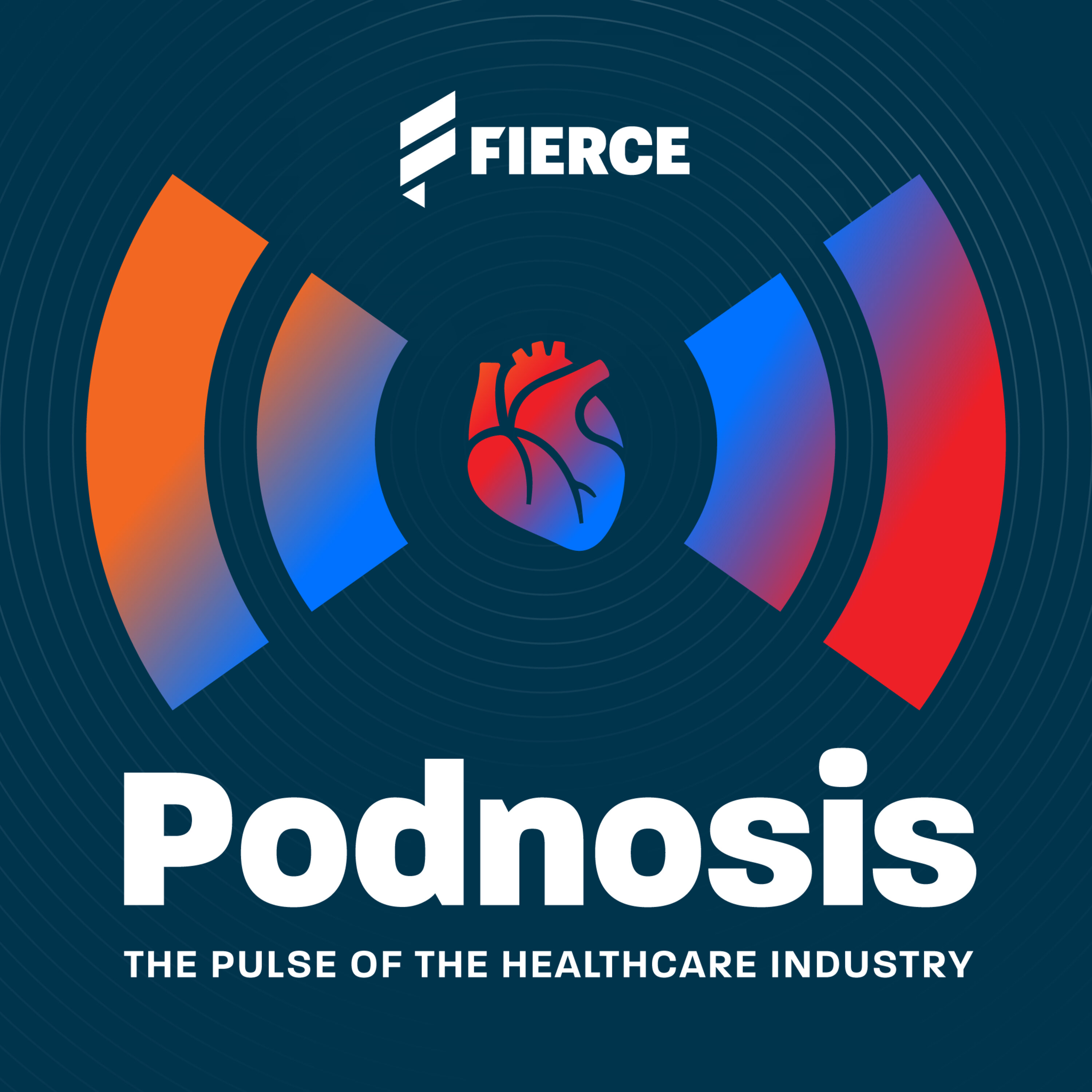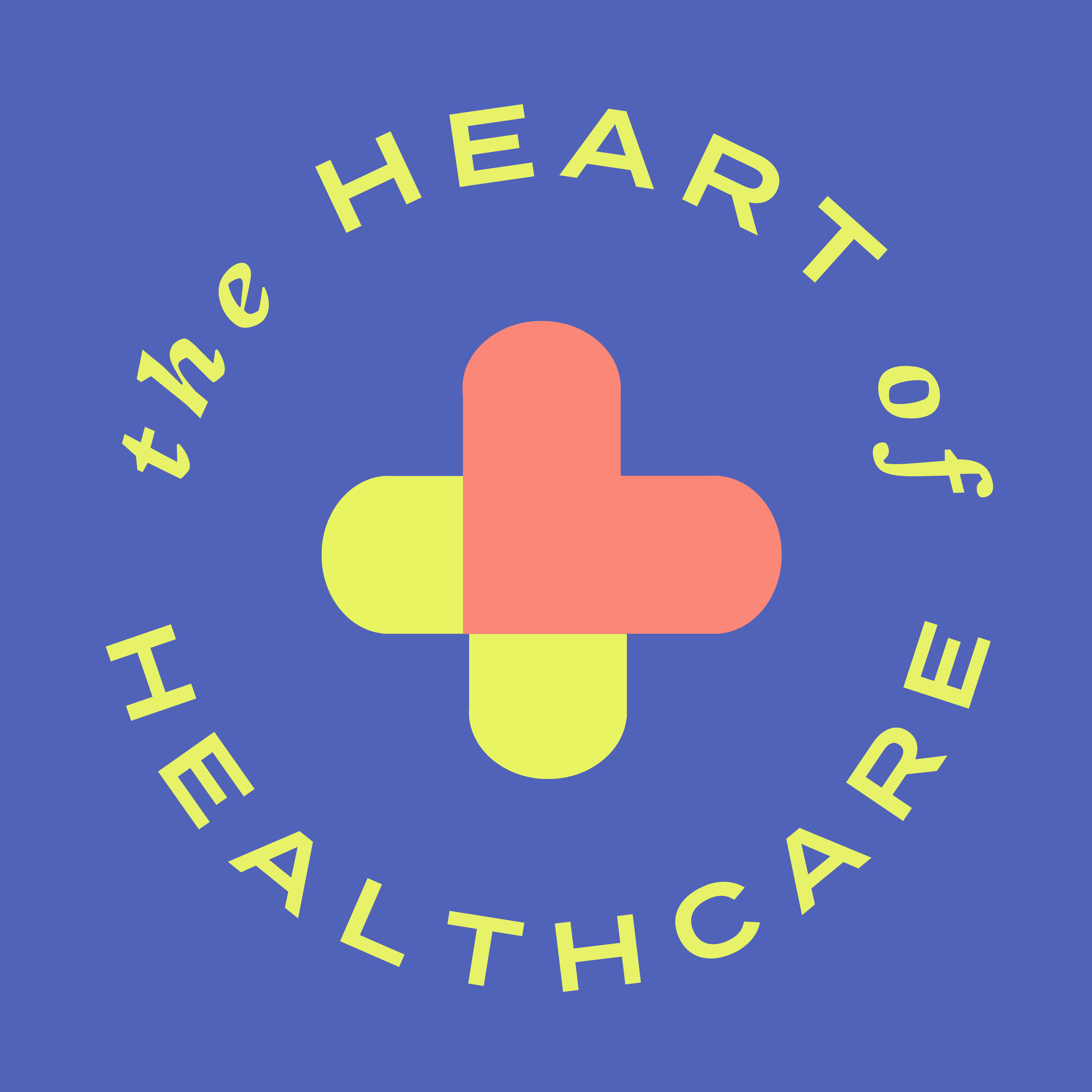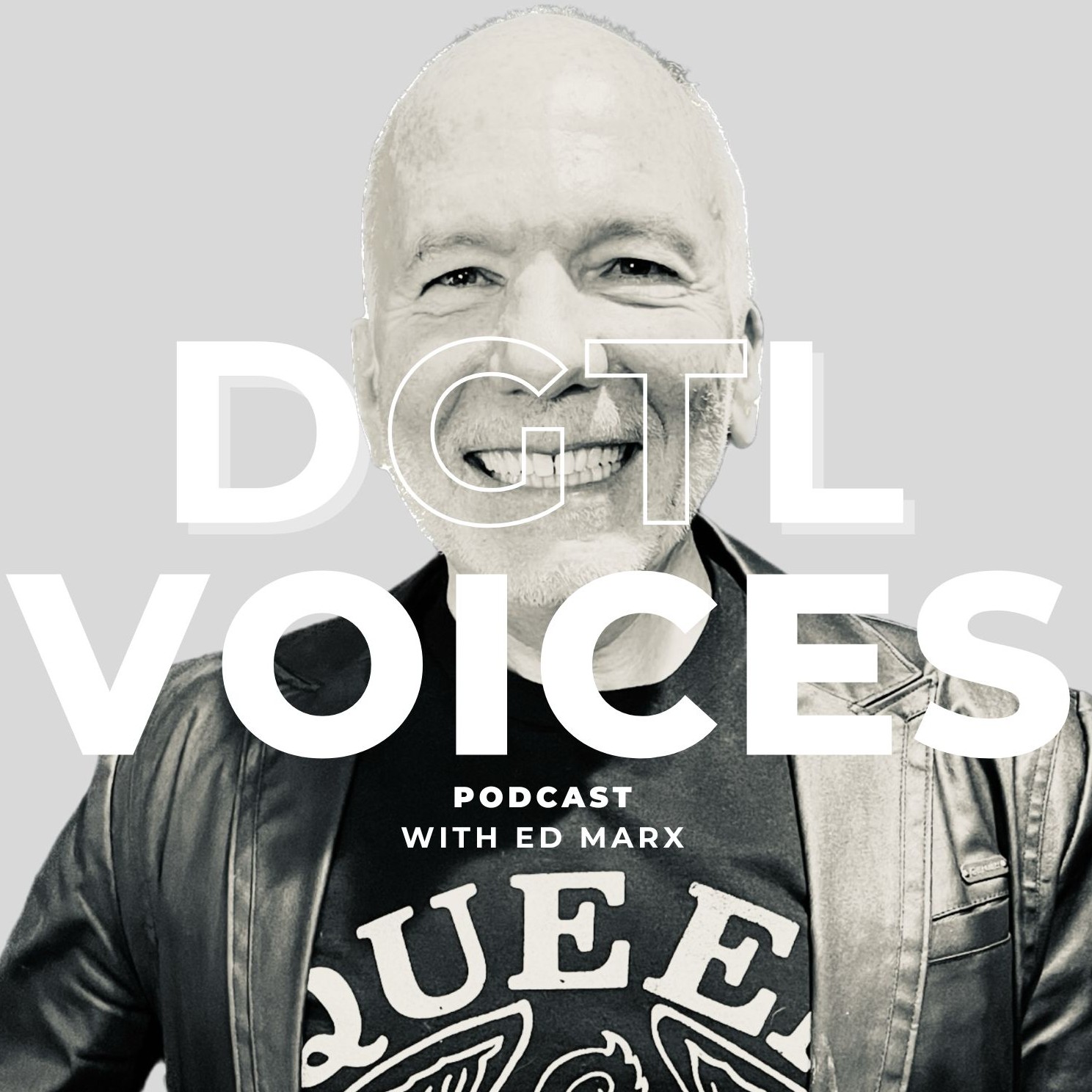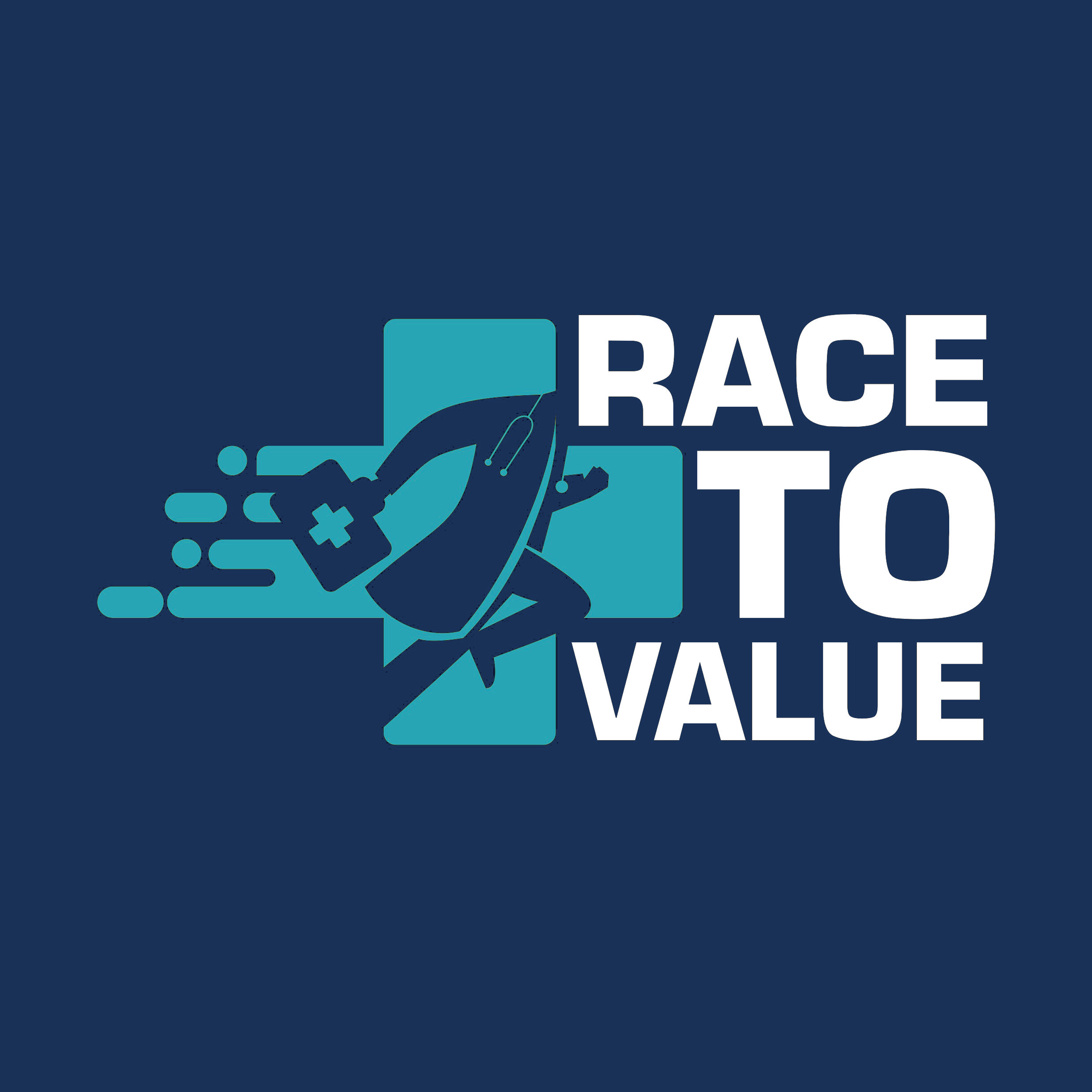.jpg)
ChilCast: Healthcare Tech Talks
ChilCast: Healthcare Tech Talks
Providence's Blueprint for Value-Based, Data-Driven Healthcare feat. Deepak Sadagopan
Deepak Sadagopan, COO of Population Health at Providence and CEO of Health Connect Partners, joins us on this episode for an in-depth conversation on the transformative power of new healthcare technologies. We unpack the complex shift toward value-based care, how data and analytics solutions are fueling this progression, and the complexity of developing a comprehensive population health strategy across disparate populations with different needs.
We navigate the possibilities of technology in enhancing health equity, while scrutinizing the practical economic implications of this shift. In a world where healthcare IT is evolving at breakneck speeds, yet the system writ-large has been loathe to change, we explore what has changed in the past 15 or so years: the pivotal role of wide adoption of electronic health records, the mandate to develop a complete digital health strategy, and the promise of interoperability initiatives like TEFCA to improve information sharing across the healthcare landscape.
Sadagopan, a seasoned veteran in healthcare system operations, sheds light on Providence's journey towards capitation, and what it takes to manage a sprawling network of care with a focus on delivering patient-centered quality within the context of numerous different value-based contracts.
We round off our discussion by considering the impact of healthcare technology investments, weighing the significance of ROI against the broader spectrum of patient outcomes and health equity. Join us as we uncover the advancements in healthcare information infrastructure and how Providence prioritizes patient-reported outcomes in their operational improvement efforts, pushing the envelope on what it means to deliver modern, quality care in America.
We've been able to make those changes as a result of a focused investment for community health workers, for in education and creating awareness in primary care settings about these needs for these populations. We've been able to move the needle a little further ahead, demonstrating that it doesn't take too much additional financial resource to support achieving equity. It takes intent, purpose and it takes the ability to be flexible in how you resource the delivery of care, recognizing that the need for care delivery resources are not equal across all populations and I think recognizing that has helped us move the needle forward in all these areas.
John Moore:Welcome back to the Chillcast, a healthcare podcast from Chillmark Research, Helping healthcare leaders make the best decisions for the populations they serve. Welcome back to the Chillcast. I am the managing partner of Chillmark Research and your host, John Moritha III. This is the sixth episode of our mini-series Delving In to have thought leaders representing different industry stakeholders think about assessing the value of digital health and health IT implementations. This series came about as part of a new collaborative effort, the Health Impact Project that Chillmark convened earlier this year with Curtis Peterson of Kingfisher Advising, Marie Coppolis of Horta Health and Pam Arlotto and Susan Irby from Myestra Strategies. After hearing ad nauseam over the last couple of years how important it is for new technologies to show efficacy in the current economic climate, we decided that it was time to come up with a better metric for evaluating the impact of technology than a standard, oversimplified financial calculation like ROI. This series is intended to catalyze industry conversations we see as necessary to reach consensus on a new model of value that C-Sweets at care organizations, payers, technology developers, investment firms and more can apply to their own initiatives. Please be sure to follow us on LinkedIn via the Health Impact Project page for updates and new content, and feel free to reach out if you'd like to get involved. For our sixth installment of the series, I'm pleased to introduce Deepak Sadegopan. Hello, John, it's great to meet you, Really looking forward to this conversation, Deepak.
John Moore:So Deepak is currently the CEO of Population Health for Washington based Providence Health and Services, where he is leading system wide transformation from fee for service to value based payment models. He also serves as CEO and board chair of Health Connect Partners, the Providence ACO serving over 120,000 assigned members as part of CMS's MSSP program. At Providence, Deepak has overseen the successful implementation of MACRA, MSSP and other Medicare and commercial value based care initiatives. Under his leadership, the MSSP program has been ranked within the top 15 of such programs in the country. This team is leading the development of an advanced data and analytics platform to support value based care programs across the system. The capabilities and processes developed by the team have been responsible for use of data driven models and methods to make operational decisions.
John Moore:Deepak serves as a strong advocate for value based care and health IT policy initiatives that can enable equitable access to health care across the communities served by Providence. He serves on the Department of Health and Human Services ONC fast track fast task force to accelerate adoption of interoperability data standards. He brings over 24 years of experience in health care, serving in leadership roles at Siemens, Quest Diagnostics, McKesson, ed effects and next gen. Over the past eight years, he has focused on working closely with payers and providers in the use of technology to drive business decisions, making the transition from volume to value based care delivery. Deepak has earned his masters in health care delivery science from Dartmouth College and a masters in engineering and data science from the University of Connecticut. He frequently contributes as an author to peer reviewed publications, business media and as a speaker and thought leader in health care forums, and we are absolutely thrilled to have him on this podcast today.
Deepak Sadagopan:Thank you, John. That's quite an introduction.
John Moore:Yeah, you've got a lot of credits there. You had a lot of credibility that you bring into this conversation. So you are the first active health care delivery system operations leader that we're hosting as part of this series. So I'm really excited for this conversation. We've spoken to a couple of VCs and we've also spoken to a patient advocate , but you're the first person actually kind of in a leadership role doing operations at a hospital. You know post pandemic in particular. I'd love to hear about some of your key learnings in a shifting economic and regulatory context, like what we've been seeing play out in health care since high tech.
Deepak Sadagopan:Yeah, I think, if you go back to high tech, it was an interesting time actually at that was the time when I was serving as living in a pure health tech role, working at McKesson, leading the e at our strategy for for compliance with the meaningful use and other related related regulatory commitments. Since that time, if you take it, there's two things I would say is one is the advancement of health care information technology and the state of the art in that industry and the progress from that point to where we are right now. And the second is the advancement of how health care is administered and paid for in this country from, from both from a delivery standpoint and delivery efficiency standpoint, as well as from an economic model standpoint. Right, and when I, when I take a look at these two things, that there was a time during high tech when the models of a delivery of health care was tightly integrated with the technology that was being created to serve those models. Since then, what I've been, what, what has become evident, is that there has been a there's been a divergence in terms of the state of readiness of technology to be able to support the emerging economic and delivery care delivery models. If you take a look at it. The, the high tech act, really focused on making the electronic health record, e certified e hr technology the center, the core of of how information would get recorded, communicated between different partners delivering health care for population. If you take a, and that worked really well when that technology was at the core, the, when there were two attributes that was governing healthcare one, the electronic health record technology was at the core of all information that was recorded about a patient and associated population and second, the enterprise that kind of implemented the electronic health record technology was at the center of delivery of health care.
Deepak Sadagopan:Since that point, if you take a look at where we are right now, particularly post pandemic, I would say that the economic and care delivery models have significantly changed. You can no longer say that the enterprise is the center of how healthcare is going to be delivered. Increasingly, care delivery is moving outside the enterprise, closer to home settings and online, and also even within a large healthcare system such as Providence, the, when you take a population in a value based care program like MSSB that you mentioned, but even though the beneficiaries or the patients 120,000 patients are attributed to Providence for care, about 30 to 40% of the care occurs outside the walls of Providence. In other words, the implication is that the data is not organically contained within the, within the electronic health record. So to coordinate care for a population that you're held accountable for, but at the same time, you don't have all the information and insights for both in terms of how much you're, how much you're spending per capita for that population, as well as what the quality of care delivery is for that population in terms of clinical care delivery. If you have a blind spot on that, then it makes it that much more challenging to operate in that environment.
Deepak Sadagopan:So so to go back to your question, I would say the high tech state of the art in creating preparedness for the electronic health record worked really well in that economic model. I think there needs to be a reassessment of what. What role does an EHR play in this new world that we live in, where every organization, whether you're a hospital system, whether you're a primary care provider, whether you're a specialist, have a feat on two worlds? One is the FIFA Service World, which is going to be there for the foreseeable future it's not going away and the other is the value-based care world, which is increasingly becoming evident in our everyday lives and in healthcare delivery and administration. So I think that's the question we need to ask ourselves.
John Moore:So the question being, what does the new technology hub for care coordination really look like, as we think about the integration of both fee for service, where the enterprise is still the center, as well as value-based care, where it is more distributed across multiple modalities of care delivery? Yep, yeah, I can definitely get behind that. I think that's part of what's driving us to do this effort is the fact that we've seen all the complaining and moaning and groaning about the additional administrative burden that regulations around EHR use have actually caused the various people at the front lines, and it's especially complicated. As to your point, you tried to reconcile patient treatment outside of the four walls of a clinic where there is one central EHR that is collecting all that information on every patient in the patient panel. So today, at the time of recording this, the QHINs just received the initial certification.
Deepak Sadagopan:Yes, special day today.
John Moore:So do you have any thoughts on how that may help with some of this issue around coordination of external care delivery with a centralized hub over the primary care is being delivered?
Deepak Sadagopan:Yeah, I think I'm pretty excited about the formation of QHINs and the TEFCA initiative. I think it's certainly a step in the right direction and it will lead us to a point where there is more certainly more forcing functions towards opening up the boundaries to share information across organizations, especially given the business and the healthcare delivery reality we live in, which is care is distributed, it's not concentrated in an enterprise anymore. So the relevance of data exchange across boundaries has never been more important than it is right now. And I would say I think it is even more urgent that we look at the exchange of information not only between provider A and provider B and creating hubs of exchange across providers. We also need to look at how does a provider exchange information with all the health insurance provider, health plans and health insurance providers. I think what HiTech has taught us is focusing on that part of the industry without focusing on the administrative part leaves the administrative part behind and less prepared to move ahead with state of the art and development in healthcare.
John Moore:Yeah, that makes a lot of sense and, as we know, there's already so much administrative bloat in healthcare that the last thing we want to do is add more to that. So you keep mentioning that there's this distributed network of care that people are now accessing. That makes it harder to kind of aggregate everything and have a single source of truth, like when you had the enterprise being the focus. So how are you approaching making sure that you actually have kind of a centralized data hub where you can see all the different patients that you're responsible for and the care that they're receiving?
Deepak Sadagopan:Yeah, I think Providence has been, has taken, has seen some of these, probably because of the markets that we operate in, predominantly on the West Coast, where managed care and the movement towards value-based care has probably been more pronounced than in a lot of the other markets that we've had to prepare for this for years now, and the way we've approached it is the electronic health record is certainly one critical component of the overall network of information, so to speak, that needs to be pulled together At the center, at the core of it. I think a key part of this is an enabling technology of moving to the to a cloud infrastructure, like our ability to not have data be information be stored on-prem, whether it's electronic health record or other components of our information architecture, is this key enabling component On top of the cloud? What we've essentially done is created a population health data model that that pulls together data from not only the electronic health record, which is internal to Providence, but also all our other network partners and claims for all the value-based care agreements that we are responsible for. So, if you think about it outside, and an aggregated pool of clinical data, the only area where you actually see the complete picture of care delivery for a given population is in a complete claims data set. The drawback for that is that claims data is always lagged, like three or six months behind the care coordination event or care delivery event. So the availability ready availability of clinical data offsets that data lag right. So there needs to be a balance to pull in clinical data from multiple edges into that population data center At the same time.
Deepak Sadagopan:The only source of truth for how much you paid for healthcare for those populations right comes from the claims data. So it's almost like two sides of the equation. Like all the care delivery and outcomes and exactly the definition of like if you're talking about a hemoglobin A1c test, the actual value of the control is actually contained in the clinical data. But the fact of how much you paid for that test and whether the test occurred and what data service when that event occurred, all of that is contained in the source of truth and claims data. So it's almost like pulling together these two pieces to be able to say paint a complete picture of what diagnoses, what chronic conditions exist in a population. How do you stratify clinical risk? And then asking yourself what's the right network of care delivery to align with that population so that the resources are aligned at the point where care is needed.
John Moore:Okay, so it's a lot about reconciling the claims with the actual clinical record that you have already. It sounds like. So do you go about finding partners locally to kind of make sure that you're bringing in feeds from them and you know, understanding what's happening in your region? I know that Providence is across multiple states. It's a very big system. So do you actually go on and actively partner with other care providers that are outside of your network or do you just kind of look at that claims data as it comes in and reconcile that way?
Deepak Sadagopan:We do both, I think.
Deepak Sadagopan:In each of the markets that we operate in, we either have a what I would say a clinically integrated network or we have a high performance network or set of affiliations that drive partnership in the delivery of care.
Deepak Sadagopan:Historically these partnerships, from a hospital system perspective, have been constructed to. You know, if you go back like 10 years, 20 years, these partnerships have been constructed historically to align more closely with the hospital book of business. But the fundamental change in the nature of these networks is towards we all share risk, financial risk for a population. So how do we take, how do we advance our clinical integration to the point where we are able to achieve a common set of outcomes for that population? And the purpose of forming the network has significantly changed in the market and that's kind of, I think, an organically evolving entity enabled by regulations like ACOs that enable, you know, coming together of like disparate entities in the market to serve a common population, tied together by financial integration. So I think one part of this is clinical integration, the second is financial integration and I think financial integration to it enables clinical integration in some way.
John Moore:Okay, yeah, that makes a lot of sense. So you know, over the course of all this kind of trial and error and experience that you've developed, what have you learned about taking on financial risk as an organization and what it means to actually operationalize the requirements of this new mandate?
Deepak Sadagopan:I think we've learned some really hard lessons, and over the past 10 years, about taking on financial risk, about when and where to take financial risk, what the type of preparation that you need, both in terms of care delivery infrastructure as well as information infrastructure to support assumption of the risk, and also what level of risk is appropriate and is actually possible in a given set of environments. Right, and those governing principles often dictate how we approach. You know transition to value in any given market. So we look at it as a portfolio of risk that you know. When you look across the continuum of risk that that HCP LAN, the learning action network, kind of lays out, we see that, depending on the type of population we focus on, we ask ourselves you know what level of risk exposure financial risk exposure and make sense for that population? What level of capacity do we have to serve those markets?
Deepak Sadagopan:So category three, which is a shared savings or risk arrangement, may be more appropriate in some markets compared to a full population based payment or a capitated model in some markets. Right and that. But in order to, in order to support category three arrangement, the type of information infrastructure that you need is very different from what you need to support a fully delegated model or a capitated model in category four, where you have to. As an example, in category three, which is more of an ACO type model, like a Medicare Shared Savings Program, what you need is the type of population health data model that I described some time back right In category four.
Deepak Sadagopan:You need all of that. Plus you need the ability to especially if you're taking claims delegation from your health plan for that risk you have to be have a full adjudication system to actually to to accept and pay claims to all the providers who are partnered with you as part of the delegated network, which is a different level of preparedness altogether compared to where providers are. So I think those are a couple of examples. I mean I could probably use the full hour to just on that question, john, but I think related to your question earlier of like how a state of the art of technology changed. I think that's kind of where I would say the majority of that change has happened, as the type of infrastructure that's necessary to take on risk has significantly changed.
John Moore:That makes sense. So real quick, how many different value based or capitated contracts are you guys actually engaged in right now? Do you have a hard number of how?
Deepak Sadagopan:many. Oh gosh, yeah, I think what's one of the. If you had asked me the same question about six or seven years back when I first joined the system, I think we would have had to engage a few consultants to give you that answer, because we didn't really know at that point. I think the the way we were getting into contracts we the delivery side, care delivery side, all this did not know that they were even in a value based care arrangement. Now I think we're able to say point to a single source of truth across the system and say, okay, we have over 120, when the exact number is close to about 127 unique value based care contracts.
Deepak Sadagopan:When you actually compare the, compare the unique cohorts every contract consists of multiple population cohorts that number is well over 150. When you think of it in terms of scale, providence and an average serves about 5.2 million unique patients every year across all our markets, from Alaska all the way to Northern Northwestern Texas. The population that is under some level of risk financial risk exposure under the ACP land categories between categories two and four are about 1.7 million of those 5.2 million and this didn't happen overnight. I mean it dramatically grew, especially after MACRA and changes in MSSB and other types of payment models. Off those 1.7 million, about three quarters of those are in categories three and four, which is where we either have shared financial risk or full financial risk in those populations. So that's kind of how our risk portfolio really breaks down.
John Moore:Okay, Thanks for that detail. That definitely helps to kind of explain the complexity of how these organizations are going about developing these different kinds of contracts. And one final question on that topic is do you think it is required for a healthcare delivery system to be an ACO or an IDN or a clinically integrated network? Basically, do they have to have their own payer kind of contracting setup in order for value based care to make sense at an economic level?
Deepak Sadagopan:I don't think so. I think what an organization needs, depending on where you are, if you think about these in terms of the networks that I described earlier, networks of care delivery, where the value based care ecosystem is really heading is really towards networks where financial risk is not concentrated in one organization alone, as financial risk is concentrated in a network of care delivery and that network bears the financial risk. And then the organization every organization needs to ask itself what role are we playing in that network? Are we a participant in that network, in which case we are taking a portion of the financial risk that is appropriate to the scope of care that we deliver, or are we taking risk? Do we have the bandwidth and the ability to take, build the network and actually create the overall infrastructure to actually support it? I think those are.
Deepak Sadagopan:Depending upon the answer to those questions, it is quite possible that a provider A may choose to be part of multiple networks and take on scopes of delivery and that could be their footprint, what that could be, what their footprint looks like in a value based care environment, whereas another provider may actually own and operate and lead and operate a network right as you may greater proportion of financial risk in the process of coordinating care delivery and driving outcomes for populations. So it really depends on the, on the provider, their situation, their infrastructure and the market that they operate in. I think Okay.
John Moore:So on a recent Becker's podcast you mentioned that you've been a key decision maker in developing the new whole person integrated health care approach at Providence that is required for VPC, and you know that phm consists of two core directives One, how do you enable positive health outcomes for the populations you serve? And two, how do you ensure equitable distribution of those outcomes within these populations? So can you describe how you're using data technologies to make more informed decisions about organization or process transformation to meet those directives?
Deepak Sadagopan:Yeah, I'm so happy you brought that that topic up. I think it's one that's close to my heart personally. Data infrastructure, the technology infrastructure, is the critical lifeblood of enabling these changes. As an example, I will use two examples. One for, in terms of care delivery outcomes We've been able to in the MSSB ACO, for example, that we were talking about earlier, we were able to change our reduce avoidable, avoidable hospitalizations, avoidable readmissions by by up to a couple of percentage points. That has that has significantly in a improved our ability to serve our population better and preserve our capacity to treat the, to treat the highest levels of acuity in our acute care facilities right. We've also been able to reduce significantly avoidable ED utilization by creating more primary care capacity and virtual care capacity so that it accesses streamlined primary care, accesses streamlined and be there is less expenditure from an emergency care standpoint, preserving that capacity to treat true medical emergencies right. I think those were some of the wins that we've had in terms of changing our care delivery models to support those populations.
Deepak Sadagopan:In terms of equity, we've had a provenance has been a leader in the space. What we, what we realized quite early on is that our existing payment models, even in value based care In many cases do not allow the space for us to focus on equitable distribution of care in our population. So we actually supplemented our value based care by providing a seed funding of about like $50 million. That Providence committed to the cause of health equity for about five years and as part of that we funded several initiatives. One of the key initiatives that we funded is maternal mortality is one of the key causes of mortality in in African American women and Hispanic women, especially in the Pacific Northwest, and some of the markets so that we serve in. So what we've been able to do is to create a program called doulas that that have been able to closely integrated with our hospital system, that have been able to advocate for, advocate for these patients and and get them the care type of care that they need so that they are able to.
Deepak Sadagopan:And we've been able to reduce the mortality counts compared to our traditional numbers significantly. And also other areas of work that we've done is reduction in hypertension in African American populations compared to white populations in the same markets, and and and in Hispanic populations. We've been able to make those changes as a result of a focused investment for for community health workers, for in education and creating awareness and primary care settings about the about these needs for these populations. We've been able to move the needle a little further ahead, demonstrating that it doesn't take too much additional financial resource to support, support achieving equity. It takes intent, purpose and it takes the ability to be flexible in how you resource the delivery of care, recognizing that the need for care delivery resources are not equal across all populations and I think recognizing that has helped us move the needle and so I look forward in all these areas.
John Moore:Well, congratulations on those outcomes that you've achieved. I know that both of those you know hypertension as well as the maternal mortality are both major talking points around the equity conversations. So congratulations on recognizing that earlier than it, before it became a huge national topic of discussion, and actually taking action. Okay, so you've been at Providence since 2017, leading BBC initiatives during that entire tenure, but you've been working on value based care in some capacity since around 2011, based on your LinkedIn. You know creds, so can you tell us how the conversation has changed over that roughly 13 year period?
Deepak Sadagopan:Yeah, I think we've been the industry, the broader industry, has been working on some version of value based care for the past since, since the HMOs first came about in 1970s, right, like I think so this has been a really long conversation in the industry, right. But specifically in my case, my involvement in that early period when, when actually the high tech act was an ACA we're getting formed, has been mostly in in patient centered, in in primary care practices, bringing them together in patient centered medical homes, in actually creating a common information infrastructure. At that time I was, I was working with you know leading leading a couple of EHR initiatives. We're working with practices in parts of the country where we were creating a common basis for reporting on a common set of quality measures that enabled practices to remain independent and not be bought out either by you know hospital systems at that time or by other entities. And we call at that point we called it maintaining the independence and vitality of those physician practices and that was the intent, right. That's where my journey started and I saw early on the potential of actually integrating assets within all of these organizations, across the boundaries of these organizations, and how that can actually contribute to the benefit of every organization to remain independent practice medical care at the at the levels that that provide the highest level of satisfactions for the, for the frontline caregivers right, and and the information infrastructure plays a key role in enabling that outcome, both from a provider standpoint as well as from the patient outcomes standpoint.
Deepak Sadagopan:That that change. That's where I first started getting involved and as I started progressively getting involved actually on the payer side, working with several payers to on their information preparedness to actually manage multiple ACOs or risk based programs, I've been able to get an insight into how information, information infrastructure challenges that exist both on the payer side and the provider side over these past 1012 years and with Providence we've been because we also have an integrated plan in some markets as well, as we have, obviously our hospital and physician delivery infrastructure, we have our electronic health records, but also our payer infrastructure challenges that that we that we have had to navigate through for the past few years to get to where we are. So from early on I would say it was loose integration of data that exists across multiple EHRs, primarily in an on prem setting, usually as a third party, kind of like clearinghouse that are creating reports. That was kind of like the infancy of infrastructure coming together to now cloud based population health models that are assimilating data at scale. We are able to react and respond much faster now to signals that we receive, to clinical data, changes like admissions to patients and admissions to patients to emergency settings, things like that that we would have taken a lot more time to even know about those events 10 years back.
Deepak Sadagopan:Right, and so, in some ways I would say, the advent of cloud based technology, combined with the ability to aggregate data from multiple edges and and apply intelligence to those areas, using, you know, machine learning at the edges, to be able to process information as it comes through and synthesize that information as close to real time as you possibly can in the as far as clinical data is concerned, and then use, use automation to process claims data, to synthesize that with the clinical data, creates us, creates this environment where an enterprise like Providence can be intelligent at the edges.
Deepak Sadagopan:Previously, that was the final fundamental changes. Previously, it took you weeks and if not months, once the information comes in from other settings, to actually process that information, whether it was in a pair or provider environment, to have that information be actionable, which by that time was too late or much of the information was dated at that point. Now you're able to synthesize and process information as it comes, comes through in a cloud environment and push it right to the whether it's integrated within the EHR for caregiver or make that available to a caregiver another form at the front lines. And so I think that in some ways, the information infrastructure has made an enterprise smarter at the edges of the enterprise, not necessarily just at its core, and I think that's been a that's been an amazing change to see in. I think it's a combination of available technology infrastructure being available by the big tech companies, like you know, microsoft and Google's and and others and Amazon, and combined with the increased sophistication of ability to create data models that operate in that infrastructure that lets you synthesize data more efficiently.
John Moore:So would you say that your job has gotten easier thanks to cloud technologies and some of these advancements, or is it still an ongoing struggle to make a case for value-based care just because of the economic imperative to make money as a business, especially in a tough economic environment like what we're seeing?
Deepak Sadagopan:today. I think value-based care has an important role to play in the economic sustainability of healthcare delivery going forward, but it has a place. I wouldn't say value-based care is going to completely replace the existing economic model. I think they will continue to operate side by side for the foreseeable future. I do think the availability of cloud technologies and the ability to quickly create data models that operate data models at scale across enterprises has made it easier to align information infrastructure in a value-based care world.
John Moore:Okay, so you have a Master's in Healthcare Delivery Sciences and that included. What I'm inferring is some health economic studies as well. Based on some things I've seen LinkedIn, I feel that makes you more qualified to answer this question than most people. What have you learned about how value and ROI are determined in healthcare?
Deepak Sadagopan:When we post a question of value in healthcare, I believe you cannot speak of value without talking about what does value mean from the perspective of a patient or a consumer, and what does it mean from the perspective of a provider, and what does it mean from the perspective of an administrator or a payer. Of all of these perspectives of what value means in healthcare, I think the ones that actually takes precedence and impacts you and I and every other individual is the perspective of the patient. And from that perspective, I would say that, while we talk about value-based care in terms of economic terms, in terms of population health terms, when you ask the question to an average consumer who's unaware of all of these models and all they're seeking is better access and better quality of care for themselves and for their family, in its simplest terms, it comes down to what's the quality of life that I lead and what's the quality of life that my family leads, and how can I provide the care needed to make sure we have the highest possible quality of life? Right, and and I do think that we have some way to go before we take all the complexity that we talk about in value-based care and really boil it down to? Are we? Can we successfully bring it down to what it means at a patient level, what it means at a consumer level? Because in in when you get lost in the value-based care world, you're talking about hundreds of quality metrics you're talking about, but it means little from the eyes of an average consumer, right, and I don't think there's a significant.
Deepak Sadagopan:If you ask an average consumer to describe what quality of care means, the terms they would use and you see this in patient reported outcomes is significantly different than how we would describe quality from a healthcare delivery or an administrative standpoint, like we describe it in terms of proportion of patients where Hema Global NMC is under control.
Deepak Sadagopan:We describe it like how many avoidable you know emergency visits? How emergency visits have you been able to avoid? Right, we've been able to describe that as are we able to provide the light, reduce medical errors and other types of avoidable procedures to the extent that you can? But in the eyes of the consumer, it comes down to all these actions taken by the healthcare delivery system as it improved my quality of life today. Am I able to walk better after my you know, knee, knee surgery or procedure? Am I able to regain functional recovery after a certain point in time. And I think, until we boil it down to that very simple equation, I think value based care is going to remain a journey for for for many of us, from the perspective for consumer. Sorry, I think I got into my soapbox there.
John Moore:Oh no, that's good. This I was actually glad you did. I'm glad you brought up the quality and outcomes from the patient member perspective, because that was actually a question that I had in our discussion guide for later but I can address it now. So I'm glad you introduced the topics. So, thinking about how you actually operationalize understanding the patient evaluation of quality of life and the patient evaluation of care, how do you go about actually kind of incorporating that into the operations of your health system and keeping that front of mind when there are these very strong economic headwinds where a lot of organizations have been struggling recently to keep their very thin margins in the black and not in the red, like pretty much every other major healthcare organization? The last couple of years have seen notable losses at Providence as well, as you know, pretty much across the industry. So how do you keep the patient at the center of that conversation when you really are having to run a business that needs to make money at the same time?
Deepak Sadagopan:I think what we've been successful in doing is across Providence. I can I can speak in the context of Providence, where we've been able to drive a lot of this change. On one hand, I think the the pivot to value based care. Every value based care arrangement that we take on, whether it's a Medicare program or whether it is a it is in partnership with one of our one of our payers has has a patient outcomes or an expedience component of that arrangement that we are held accountable to right and so focusing on that and as an integral part of our commitment to value transition to value-based care is Is a component of this. The second I would say is, across the system we have, we have kind of put in place patient reported outcomes as one of the key Indicators that that everybody, from our senior leadership team down to our frontline caregivers are, hold ourselves accountable for as part of patient PROs and and I think it's a way for us to hold the patient perspective at the center of everything that we do.
Deepak Sadagopan:And the third I would say, and probably the most important, is at our core, at our DNA.
Deepak Sadagopan:We are a mission-driven, mission-driven organization and that has helped us see beyond the economics, of economic realities of the day and really focus on the core of what our calling is is to serve.
Deepak Sadagopan:Serve everybody, regardless of who they are and propensity to pay, and especially those who are, who are poor and vulnerable, that you know aren't able to get care from anywhere else. They come to Providence and, and I think our ability to, you know, participate in value-based care and our ability to create the Delivery system that can scale across all of these different segments of populations that we serve is, is our core job and that's kind of all what we hold ourselves accountable to. And and when we look at it from an economic sustainability standpoint, we are, we've always relied on partnerships with, with our with not only our traditional network partners from a care delivery standpoint, but also with the community, with other entities that that help us, you know, deliver care for those who need it when they need it, taking advantage of, especially over the past 10 years, advances in technology such as virtual care delivery and other Other changes that have made it possible for us to reach out to populations and provide access where it was not possible earlier.
John Moore:Do you have any unique or Really interesting, unexpected Learning that you've had from the conversations with patients and trying to understand what really drives their quality of life? When you think about aligning outcomes, measures to quality of life, is there anything that you haven't expected, that you've learned from patients?
Deepak Sadagopan:I think that's an interesting conversation. I think the when we receive inputs from our many of our patients. I think that's one of the reasons why we created PROs as our. One of our central pillars of holding ourselves accountable for this is that we hear from our patients about Things that are core and are of interest to them in their own health care delivery, and there are things that we sometimes hear that that it's not generally about, you know, the type of procedure that is chosen or the type of care therapy. It's more about how quickly can I recover, how quickly can I stay close to home? I would rather be close to home if possible. So I think it's made us ask ourselves a more difficult question of Our traditional modes of care delivery are so designed around an enterprise and settings, and really, how do we redesign our health care delivery system with a patient at its center?
John Moore:Okay, so thinking about that technology piece that we've been touching on how have you historically thought about determining the ROI of health care technology and, you know, thinking about the value and impact that you're getting out of these investments.
Deepak Sadagopan:I think the that question has gotten more complex over the past few years, especially given the all the all these factors that we've discussed right In the, in the economic realities that we currently live in, where it's become really challenging to to continually invest in more initiatives outside of Care, care delivery. The way we look at ROI pretty much is along one part, which is like our for Our core care delivery systems, which is our electronic health record systems. It's really about, you know, does it improve the productivity of our caregiving staff? Does it make it easier, are they able to Provide, deliver care in a more efficient manner, and Does it promote our ability to drive efficiency in our administrative operations? That's kind of how we look at ROI in that, in those core systems.
Deepak Sadagopan:But I would say, when you look beyond that, in some of the technologies that we talked about, which is our care delivery infrastructure, like for in a population health setting, we look at a return to the health care system, which is our care delivery infrastructure, like for in a population health setting. We look at returns in Value-based care. We look at RV. Is the technology promoting our ability to close care gaps faster? Is it able to identify Events and signals quicker? Are we? Are we doing more now than we did prior to when, when we, when we had the technology? Are we driving better outcomes right? And is that creating a Are? Is that are we able to identify a greater proportion of chronic conditions in our population so that we're able to align care resources to that?
Deepak Sadagopan:Those are the questions we ask ourselves, and I would say there are three classes of technology. There's the core electronic health record, care delivery technology, the population health component. There is the digital components that surround our healthcare delivery system, that are Reference, that's a digital door, which is how do you gain access to the health care system? How do you schedule appointments? All of those processes are changing, so is it? Does, I think, we? The way you evaluate ROI and all three really depends on the purposes that they serve and who's gaining value from that.
John Moore:Okay. Can you provide any specifics of where you've seen technology work really well that may not meet those traditional ROI Standards that have had notable positive impact for Providence?
Deepak Sadagopan:I think and we just talked about Health equity as an example, right Like where, a key component, if you really think about information infrastructure that supports some of those initiatives, it's about Collecting. Collecting information such as social determinants you know that that exists both at a In general, at a block level, at a in public use type information. Combining that with information that you actually collected. The point of care, developing the intelligence internal to our delivery system of being able to say what are the health related social needs, risk related, risk factors that actually impact health outcomes the most.
Deepak Sadagopan:I think the information infrastructure in that area is not directly tied to any financial return. For example, it is only tied to are we able to identify the Right type of care needs for every, every given population? Do we? Are we understanding populations not only from the context of what we see in their electronic health record, but are we gaining a perspective of whole person needs across populations? It's one example of where there's disproportionate return in terms of like outcomes that we see. But if you had, if you try to traditionally justify it in terms of financial return, like you'd normally do with, like a billing system or something like that, or or with a, or even with a population health analytics system, it's challenging to measure the return of the population In the same way.
John Moore:Yeah, that's kind of what prompted this is because we see people keep really focusing. We've seen a lot of people focusing on you know you have to prove your ROI. You really have to show ROI quickly, within like a year of technology implementation, and part of the reason for this health impact project is that we think that that's possible with certain technologies, but it's unrealistic with other technologies, especially when you're looking at changing care models. You know there's usually a lag during that transformation where there might be a dip in your revenues while you're kind of rebalancing with the value-based contracts and the fee-for-service model, and so I think it's really important for people to take into account what you're saying. Just, you know, the health equity, the social impact, the patient outcomes all those need to be factors in these conversations.
Deepak Sadagopan:Yeah, and if you really connect the dots forward, what we have seen is that these investments that we've made in technologies, in these areas are contributing towards financial return indirectly in some ways. If you really think about the value-based economics, I mean, especially if you're, for example, in a value-based arrangement for a Medicare or Medicaid population, your total cost of care is dependent on your average per capita expenditure. If there's a portion of the population that is consuming more resources of your healthcare system where, because of inequitable distribution of healthcare, then that proportion is going to contribute to increasing in total cost of care for that population. So if you're ultimately your financial outcomes are determined by how much you spend in terms of healthcare delivery for that population, then the inference naturally is that if you put in place investments that create more equitable utilization of resources, then that will contribute to better return over a period of time. And that's what. You don't see it in one year, you don't see it in even two years. It takes like five years to actually see the value of some of these initiatives.
John Moore:Yeah, I feel like that's where the classic argument against value-based care on the payer side comes into play, where they're like well, we probably won't see the benefits of this because of how quickly people change between plans and why it makes sense for a capitated healthcare delivery system to be the ones that are responsible for that and be both the payer and the provider, so they see that longer-term benefit of preventive care measures Alright. Well, thank you so much for joining us today as we explore the many ways that different industry stakeholders think about the value of healthcare data technologies and tech enabled services. If any of our listeners want to learn more or get in touch with you, how would they go about doing that?
Deepak Sadagopan:I think email is a great way to get in touch, or LinkedIn is a great way to get in touch with me.
John Moore:Okay, fantastic, we'll keep up the great work at Providence. It's been really fascinating and encouraging to see how some of these IDNs, or CINs, are succeeding in this transition to value-based care, and Providence has clearly proven themselves to be one of those. So thank you very much for sharing your expertise with us throughout this conversation, deepak.
Deepak Sadagopan:Wonderful, thank you. Thank you so much for inviting me, john. Pleasure to speak with you. I followed your where Tillmack's work with a lot of interest, both in my previous lives as in the health technology industry, as well as now in the healthcare delivery perspective. Grateful for the work that you guys do and delighted to be here and for this conversation.
John Moore:Well, thank you so much for those kind words, deepak. I think I don't know if you knew this, but McKesson was actually one of our clients way back in the days, when they're still developing their own IT systems. So I've always had a fondness in my heart because that was when I first got into the industry. We were working pretty closely with you guys. Okay, so to continue following along with these conversations, be sure to subscribe to the Chillcast on your favorite podcasting app and follow the Health Impact Project on LinkedIn. We have quite a few conversations planned with other industry leaders representing a broad array of stakeholder roles, who will be sharing their perspective on the value of healthcare technology. Feel free to reach out with any questions or suggestions for additional guests to host as part of the series. Thanks for tuning in and being part of the solution. Thank you, john.
Podcasts we love
Check out these other fine podcasts recommended by us, not an algorithm.

Podnosis
Fierce Healthcare
Akimbo: A Podcast from Seth Godin
Seth Godin
Straight Outta Health IT
Straight Outta Health IT
Beyond Clinical Walls
Dr. Bayo - Dr. Bayo Curry-Winchell, MD, MS
The Heart of Healthcare | A Digital Health Podcast
Massively Better Healthcare
The Knowledge Project
Shane ParrishRelentless Health Value
Stacey Richter
DGTL Voices with Ed Marx
dgtlvoices
The Race to Value Podcast
Institute for Advancing Health Value
HIT Like a Girl Pod: Empowering Women in Health IT
Like a Girl Media
Breaking Points with Krystal and Saagar
iHeartPodcasts
NEJM AI Grand Rounds
NEJM Group
In AI We Trust?
Miriam Vogel
InteropNow! Podcast
HLTH and CHIME
Leveraging Thought Leadership
Peter Winick and Bill Sherman
99% Invisible
Roman Mars
How I Built This with Guy Raz
Guy Raz | Wondery
Equity
TechCrunch, Rebecca Bellan, Kirsten Korosec, Anthony Ha, Max Zeff, Theresa Loconsolo

